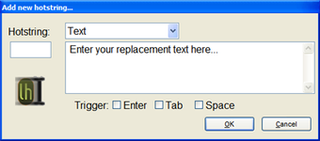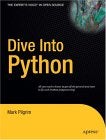Programmer 101: Teach Yourself How to Code
You've always wanted to learn how to build software yourself—or just
whip up an occasional script—but never knew where to start. Luckily, the
web is full of free resources that can turn you into a programmer in no
time.
Since the
invention of the internet, programmers have been using it to discuss
software development techniques, publish tutorials, and share code
samples for others to learn from and use online. If you're curious about
how to become a programmer, you can get off to a running start using
tons of great free web-based tutorials and resources.
First Things First: Don't Get Hung Up on Choosing a Language

A
common pitfall for beginners is getting stuck figuring out which
programming language is best to learn first. There are a lot of opinions
out there, but there's no one "best" language. Here's the thing: In the
end, language doesn't matter THAT much. Understanding data and control
structures and design patterns does matter very much. Every
language—even a simple scripting language—will have elements that you'll
use in other languages as well and will help you learn. In classes I
took to get my degree in Computer Science, I programmed in Pascal,
Assembly, and C—languages I never actually got paid to program in
professionally. I taught myself every language I've used in my career,
reusing concepts I already knew, and referring to documentation and
books to learn its syntax. So, don't get hung up on what language to
learn first. Pick the kind of development you want to do, and just get
started using one that works.
There are
several different kinds of software development you can do for various
platforms, from the web to your desktop to your smartphone to a command
line. In this article, we'll outline some of our favorite starter
tutorials and resources for teaching yourself how to program for each
major platform. We're going to assume you're a savvy user, but a newb
when it comes to wrangling code snippets, so we'll keep things at the
beginner level. Even just following through a beginner programming
tutorial, you'll be happy to see how far you can get.
Desktop Scripting
The easiest
way to try your hand at programming for your Windows or Mac desktop is
to start with a scripting or macro program like AutoHotkey (for Windows) or Automator
(for Mac). Right now hardcore coders throughout the Lifehacker
readership are yelling at their monitors, saying that AHK or AppleScript
are not "real" programming. That may be true—technically these types of
tools just do high-level scripting. But for those new to programming
who just want to get their feet wet, automating actions on their
desktop, these free tools are a fantastic way to start—and you'd be
surprised at how much you can do with them.
 Expand3
Expand3
For example, Adam developed the standalone Windows application we all know and love, Texter,
using AutoHotkey, so this scripting language is capable of far more
than just small-scale automation projects. To get started with
AutoHotkey, check out Adam's tutorial on how to turn any action into a keyboard shortcut using AutoHotkey. (Then, check out the source code for Texter to see the innards of a full-fledged AHK-based Windows application.)
Web Development
Instead of
being bound to specific programming languages and the look and feel of a
particular operating system, you can put your killer application in the
browser and run it in the cloud, as a webapp. Welcome to the wonderful
world of web development.
HTML and CSS:
The first thing you need to know to build any web site is HTML (the
page markup that makes up web pages) and CSS (the style information that
makes that markup look pretty). HTML and CSS are not true programming
languages—they're just page structure and style information. However,
you should be able to author simple HTML and CSS by hand before you
begin building web applications, because a web page is the frontend to
every webapp. This HTML tutorial is a good place to start.
JavaScript:
Now that you can lay out a static web page with HTML and CSS, things
get fun—because it's time to learn JavaScript. JavaScript is the
programming language of the web browser, the magic that makes dynamic
in-page effects go. JavaScript is also the stuff of bookmarklets, Greasemonkey user scripts, and Ajax, so it's the key to making all sorts of web goodies. Start learning JavaScript here.
Server-side scripting:
Once you're good at making things happen inside a web page, you're
going to need to put some dynamic server action behind it—and for that,
you'll need to move into a server-side scripting language, like PHP,
Python, Perl, or Ruby. For example, to make a web-based contact form
that sends an email somewhere based on what a user entered, a
server-side script is required. Scripting languages like PHP can talk to
a database on your web server as well, so if you want to make a site
where users can log in and store information, that's the way to go.
Excellent web development site Webmonkey is full of tutorials for various web programming languages. See their PHP Tutorial for Beginners. When you're ready, check out how to use PHP to talk to a database in WebMonkey's PHP and MySQL tutorial. PHP's online documentation and function reference is the best on the web. Each entry (like this one on the strlen function)
includes user comments at the bottom which are often as helpful as the
documentation itself. (I happen to be partial to PHP, but there are
plenty of other server-side scripting languages you might decide to go
with instead.)
Web frameworks:
Over the years, web developers have had to solve and resolve the same
problems and rewrite similar code to build dynamic web sites. To avoid
making everyone reinvent the wheel for every new web development
project, some programmers have come up with development frameworks that
do some repetitive work for you. The popular Ruby on Rails
framework, for example, takes the Ruby programming language and offers a
web-specific structure for getting common web application tasks done.
In fact, Adam used Rails to build his first serious (and impressive!)
web application, MixTape.me. Here's his take on how to build a web site from scratch with no experience. Other popular web development frameworks include CakePHP (for PHP programmers), Django (for Python programmers), and jQuery (for JavaScript).
Web APIs: An API (Application programming interface)
is a programmatic way for different pieces of software to talk to one
another. For example, if you want to put a dynamic map on your web site,
you want to use a Google Map instead of building your own custom map. The Google Maps API
makes it easy to programmatically include a map in a page with
JavaScript. Almost every modern web service you know and love has an API
that lets you include data and widgets from it in your application,
like Twitter, Facebook, Google Docs, Google Maps, and the list goes on.
Integrating other webapps into your web application via API's is the
final frontier of rich web development. Every good, major web service
API offers thorough documentation and some sort of quick start guide to
try it out (here's Twitter's, for example). Go crazy.
Command Line Scripting
If you want
to write a program that takes textual or file input and outputs
something useful, the command line is the right place to do it. While
the command line isn't as sexy or good-looking as a webapp or desktop
app, for rapid development of quick scripts that automate processes, you
can't beat it.
Several
scripting languages that work on a Linux-based web server also work at
the command line, like Perl, Python, and PHP—so learning one of those
baddies makes you conversant in two contexts. My path never took me too
far down the Perl road, but I taught myself Python using the excellent
and free online book, Dive into Python.
 Expand6
Expand6
If becoming
a Unix ninja is one of your programmer goals, you absolutely must get
good at shell scripting with bash. Bash is the command line scripting
language of a *nix environment, and it can do everything from help you
set up automated backups of your database and files to building out a
full-fledged application with user interaction. Without any experience
writing bash scripts beyond a dozen lines, I wound up developing a
full-on personal to-do list manager in bash, Todo.txt CLI.
Add-ons
Nowadays,
modern webapps and browsers are extensible with with bits of software
that bolt onto them and add features. Add-on development is gaining in
popularity as more developers look at existing software, like Firefox or
WordPress, and think "But if only it could do THIS..."
You can do a whole lot in any web browser with just a mastery of HTML, JavaScript, and CSS. Bookmarklets, Greasemonkey user scripts, and Stylish
user styles are created with the same bits of code that make regular
web pages, so they're worth learning even if you just want to tweak an
existing site with a small snippet of code.
More
advanced browser add-ons, like Firefox extensions, let you do more.
Developing Firefox extensions, for example, requires that you're
conversant in JavaScript and XML (markup that's similar to HTML, but way
more strict in format). Back in 2007 I ran down how to build a Firefox extension, a skill I picked up after I stumbled upon a free tutorial.
Many free
and well-loved web applications offer an extension framework as well,
like WordPress and MediaWiki. Both of those apps are written in PHP, so
comfort with PHP is a prerequisite for getting started. Here's how to write a plug-in for WordPress.
Developers who want to ride the cutting edge of Google Wave can get
started writing gadgets and bots in HTML, JavaScript, Java, and Python. I
wrote my first Wave bot following this quick start tutorial in one afternoon.
Web Development for the Desktop
The best
part about getting started programming in one context is when you can
take those skills and apply them elsewhere. Learning web development
first is a great way to start because now there are ways to put those
skills to work on desktop applications, too. For example, Adobe AIR
is a cross-platform run-time environment that lets you build your app
once and release it to run on the desktop for every operating system AIR
runs on. AIR apps are written in HTML, Flash, or Flex, so it lets you
apply your web development skills in a desktop context. AIR is a great
option for deploying desktop apps like one of our top 10 apps worth installing Adobe AIR for.
Mobile App Development
Mobile
applications like the ones you run on your iPhone or Android smartphone
are all the rage right now, so you may have dreams of striking it rich
in the iTunes App Store with the next killer app. However, for the new
coder, diving headfirst into mobile development can be a rough learning
curve, since it requires comfort with advanced programming languages
like Java and Objective C. However, it's worth checking out what iPhone
and Android development looks like. Check out this simple iPhone application development example to get a taste of what iPhone developers do. Android apps are written in Java, and here's a friendly video tutorial of what building a "Hello Android" application workflow looks like.
Patience, Elbow Grease, Trial and Error
Good coders
are a special breed of persistent problem-solvers who are addicted to
the small victories that come along a long path of trial and error.
Learning how to program is very rewarding, but it can also be a
frustrating and solitary experience. If you can, get a buddy to work
with you along the way. Getting really good at programming, like
anything else, is a matter of sticking with it, trying things out, and
getting experience as you go.
This
article is just one self-taught programmer's top-of-mind recommendations
for beginners. Experienced programmers: What did I miss? No matter your
skill level, add your thoughts and recommendations for beginners to the
comments.
Gina Trapani, Lifehacker's founding editor, thinks the best programmers are self-taught. Her weekly feature, Smarterware, appears every Wednesday on Lifehacker. Subscribe to the Smarterware tag feed to get new installments in your newsreader.




No comments:
Post a Comment
Note: only a member of this blog may post a comment.